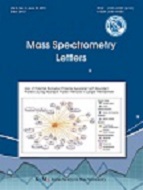
- P-ISSN 2233-4203
- E-ISSN 2093-8950

The aim of this study was conducted to develop an analytical method to determine the concentration of ceftiofur residue in eel, flatfish, and shrimp. For derivatization and extraction, the sample was hydrolyzed with dithioerythritol to produce desfuroylceftiofur, which was then derivatized by iodoacetamide to obtain desfuroylceftiofur acetamide. For purification, the process of solid phase extraction (Oasis HLB) was used. The target analytes were confirmed and quantified in C 18 column using liquid chromatography-tandem mass spectrometry with 0.1% formic acid in water (A) and 0.1% formic acid in acetonitrile (B) as the mobile phase. The linearity of the standard calibration curve was confirmed by a correlation coefficient, r 2 > 0.99. The limit of quantification for ceftiofur was 0.002 mg/kg; the accuracy (expressed as the average recoveries) was 80.6-105%; the precision (expressed as the coefficient of variation) was below 6.3% at 0.015, 0.03, and 0.06 mg/kg. The validated method demonstrated high accuracy and acceptable sensitivity to meet the Codex guideline requirements. The developed method was tested using market samples. As a results, ceftiofur was detected in one sample. Therefore, it can be applied to the analysis of ceftiofur residues in fishery products.
김미란. (2015). 서울지역 유통 식육 중의 세팔로스포린계 항균물질 잔류실태 조사. 한국가축위생학회지, 38(4), 259-264.
김윤정. (2012). 국내 항균제의 사용 실태와 변화 추세(V). Infection and Chemotherapy, 44(6), 411-418.
World Health Organization. (2017). Antimicrobial Resistance:Global Report on Surveillance. .
Kim, J. W. (2014). . J. Fish Pathol, 27, 67-.
Ministry of Food and Drug Safety, South Korea. Korean Food Code.
Chung, H. S. (2007). . J. Vet. Med. Sci, 69, 1081-.
De Baere, S. (2004). . Anal. Chim. Acta, 512, 75-.
Lommen, A. (2009). . J. Chromatogr. A, 1216, 8177-.
Feng, S. (2014). . J. Agric. Food Chem, 62, 5011-.
Shin, D. (2018). . Food Anal. Methods, 11, 1815-.
Berendsen, B. J. (2012). . Food Addit. Contam. Part A-Chem, 29, 197-.
Mompelat, S. (2015). . J. Chromatogr. A, 1407, 119-.
Kang, H.-S. (2018). . Food Control, 85, 57-.
Tyczkowska, K. L. (1993). . J. Chromatogr. B, 614, 123-.
Makeswaran, S. (2005). . Anal. Chim. Acta, 529, 151-.
Zhou, L.-J. (2012). . J. Chromatogr. A, 1244, 123-.
Codex Alimentarius. Guidelines for the design and implementation of national regulatory food safety assurance programme associated with the use of veterinary drugs in food producing animals CAC/GL 71.